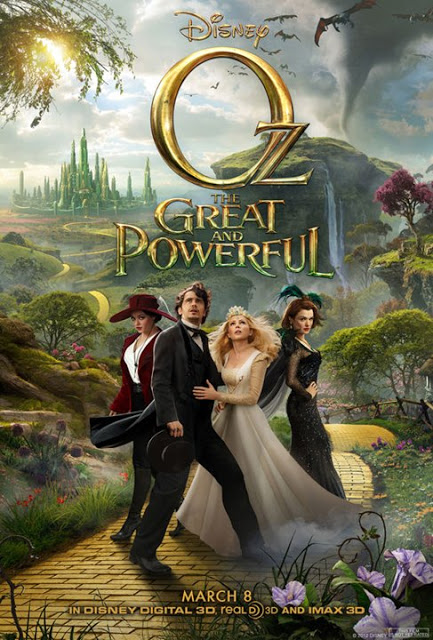Written by Lady T.
 |
| Dorothy and friends skip to the Emerald City |
The Wizard of Oz is my favorite movie. There are movies that are more artistically accomplished, movies that are more sophisticated, and funnier films that make me laugh my butt off, but no film I’ve seen has the same sentimental, emotional effect on me as The Wizard of Oz.
I love this movie as I love no other movie. And I hate the ending.
Let me explain.
The plot of the movie is fairly straightforward. Dorothy and her three male companions go on the same quest: to meet the Wizard of Oz. Each member of the original Fab Four has a different reason to meet the Wizard. The Scarecrow wants a brain, the Tin Man wants a heart, the Cowardly Lion wants courage, and Dorothy wants to go home to her Auntie Em and Uncle Henry in Kansas.
In the end, their quests prove to be unnecessary, and not just because the Wizard is a charlatan who cannot give the characters what they desire. As it turns out, each character already possesses the quality he or she was seeking. The Scarecrow doesn’t need a brain — he’s already the smartest person in the group, a quick thinker and problem-solver who comes up with the plans to break into the Wicked Witch’s castle. The Tin Man doesn’t need a heart — he’s already emotional, crying whenever his friends are in trouble. The Lion doesn’t need someone to give him courage — he already steps up to every challenge that’s presented to him, even when it scares him. And Dorothy doesn’t need to go home — she’s been there the whole time, because the entire colorized section of The Wizard of Oz was all just a dream!
BOOOOO. (Just to make myself perfectly clear, I am, in fact, saying “Boooo!” and not “Boo-urns!”)
 |
| “Wait – I thought it was a trip, but I was really just tripping?” |
I hate “it was just a dream!” endings on principle, because if the entire conflict takes place in the main character’s head, there’s no real urgency, nothing really at stake.
I hate that the message — “What you thought you wanted is something you really had all along!” – is applied differently to Dorothy than it is to her friends. The Scarecrow, Tin Man, and Lion are told that they always had a brain, a heart, and courage, and the Wizard giving them their “gifts” is affirmation of their strengths. Dorothy, on the other hand, gets a lecture from Glinda and has to realize that “if I ever look for my heart’s desire again, I won’t look any further than my own backyard.” Her friends get to realize that they were always smart, emotional, and brave, while she has to learn a lesson about being grateful for what she already has.
I hate the ending because it breaks my heart to think that Dorothy’s friendships were all a product of her fantasy.
 |
| Dorothy yearns for life somewhere over the rainbow |
The truth is, Dorothy doesn’t have a bad life on her farm in Kansas. Her aunt and uncle love her and take care of her, and the hired hands on her aunt and uncle’s farm treat her with kindness and consideration. I don’t mind that she takes a minute to appreciate that and realizes that running away is not the best idea.
But even though a loving family is invaluable, guardians are not the same thing as friends.
In Oz, Dorothy has friends and equals. She and the Scarecrow, Tin Man, and Lion share the same adventures and support each other. She invites them on her quest to find the Wizard, giving them hope where they had none before, and in turn, they save her from the clutches of the Wicked Witch of the West. They don’t treat her differently because she’s a girl; any concern they have for her is because they fear for her life in an enemy’s hands, not because they doubt her abilities or strength.
There’s mutual respect and love among Dorothy and her friends and equals, something she doesn’t have in Kansas because there’s no one her age to relate to her — and we’re supposed to happily swallow that this is all just a dream, and there’s no place like home?
Well, I don’t accept it. I refuse. In my mental version of the ending, Oz is real. Dorothy traveled there and came back, and even though she has a renewed appreciation for her day-to-day life, the door is still open for her to return, where the new rulers of Oz — the Scarecrow, Tin Man, and Lion — will all be waiting for her, ready to go on their next adventure.
 |
| Dorothy and her three best friends |
Lady T is an a writer and aspiring comedian with two novels, a play, and a collection of comedy sketches in progress. She hopes to one day be published and finish one of her projects (not in that order). You can find more of her writing at The Funny Feminist, where she picks apart entertainment and reviews movies she hasn’t seen.







